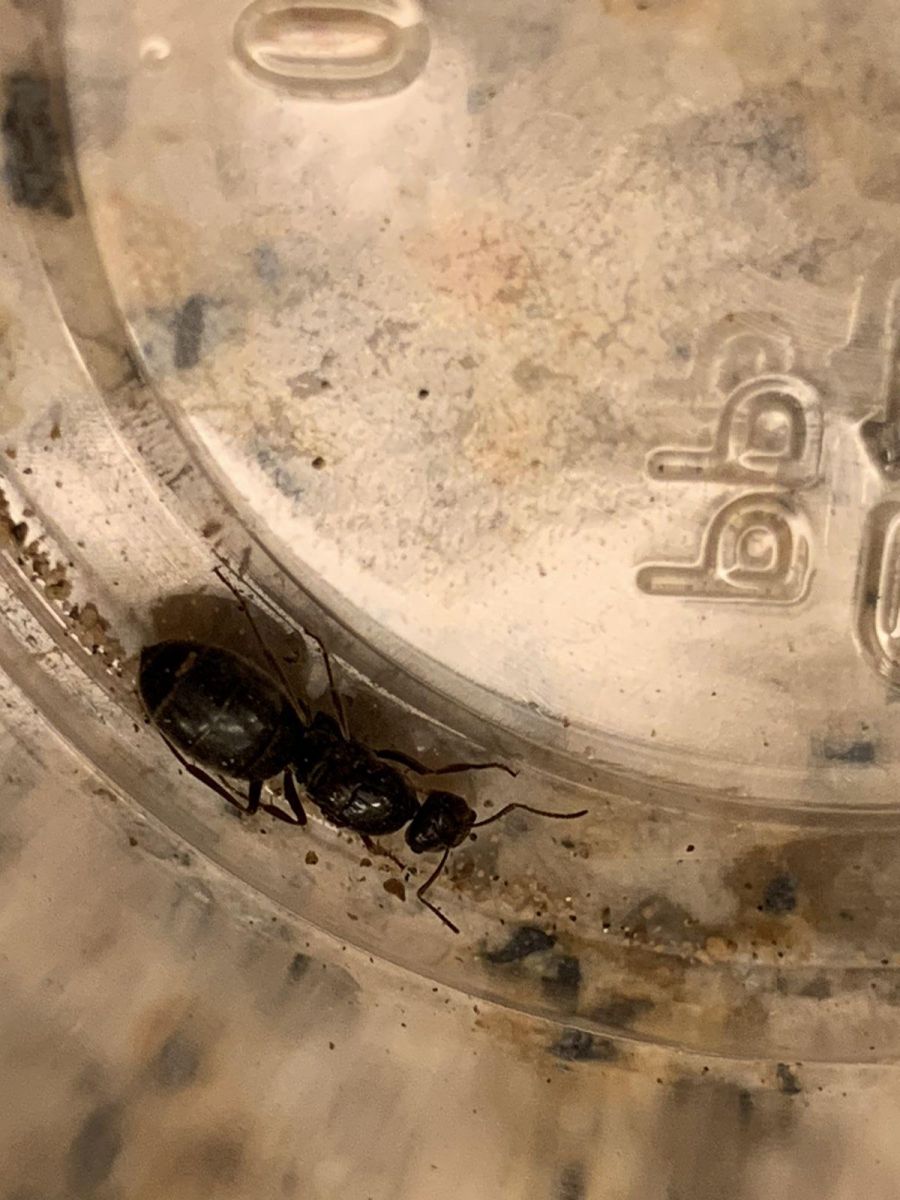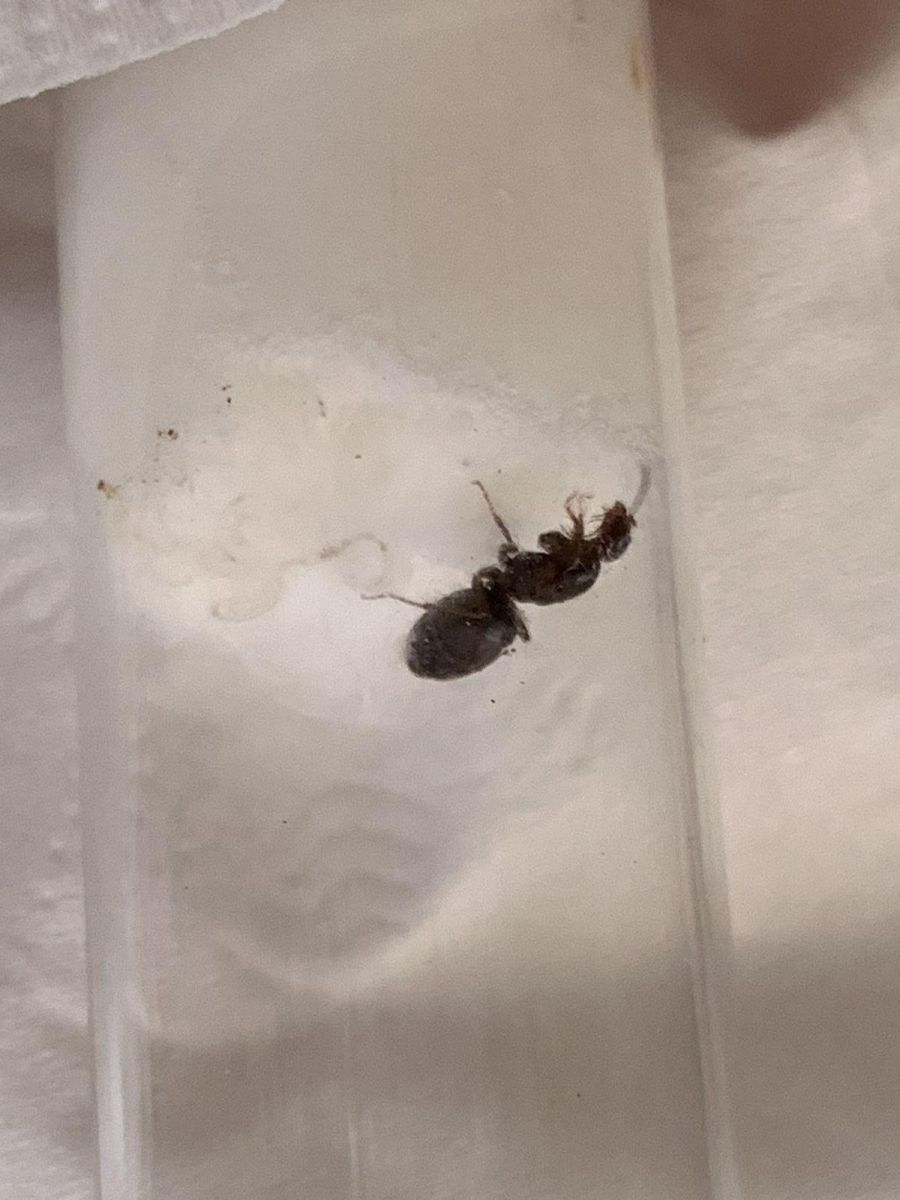Sorry for the bad images but it would not stand still. I can putting it in the refrigerator to slow it down if the pics aren't good enough. Thanks all.
1. Location of collection: 29 Palms in an area that recieved heavy rain fall in the last 36-48 hours
2. Date of collection: 7/25/2019 at 7pm, all queens were dug up from newly dug foundation nests
3. Habitat of collection: desert scrub
4. Length: 8-9 Millimeters
5. Coloration, hue, pattern and texture (ie: dark redish-orange head, velvet-like gaster, translucent, hairy/bald, shiny/dull, etc.): Dark brown
6. Distinguishing characteristics:
7. Anything else distinctive:
8. Nest description: None found
9. Nuptial flight time and date: Not seen


Edited to add size
Edited by ariaant, July 27 2019 - 7:44 PM.
















